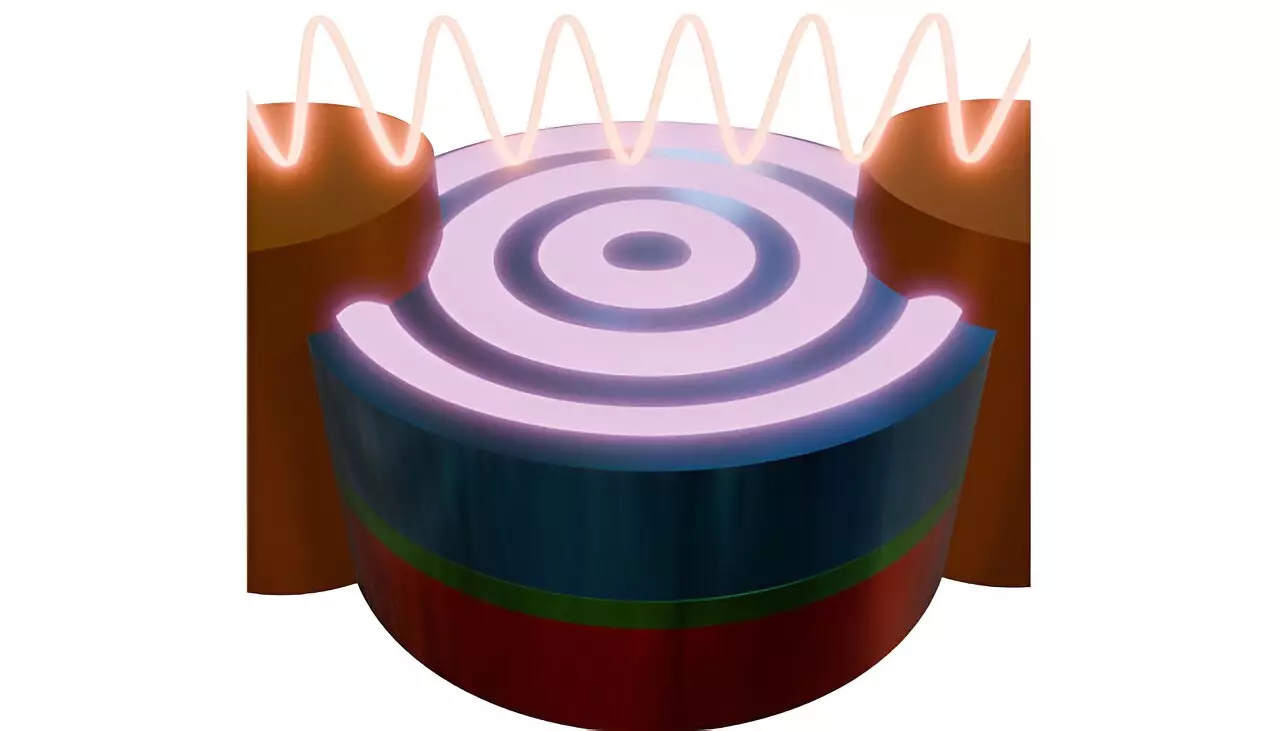Recent advancements in computing technology suggest a transformative shift in the way we conceptualize and execute computational tasks. A collaborative research effort involving the University of Vienna, the Max Planck Institute for Intelligent Systems, and the Helmholtz Centers has unveiled an innovative approach to fabricating reprogrammable magnonic circuits. This breakthrough could potentially address pressing limitations regarding miniaturization and energy efficiency, crucial factors for contemporary computing devices. Published in the prestigious journal *Science Advances*, this research heralds a new era in the pursuit of sustainable and effective computational architectures.
Current central processing units (CPUs), which rely heavily on billions of transistors built with complementary metal-oxide-semiconductor (CMOS) technology, are increasingly encountering insurmountable challenges. As devices shrink in size to meet consumer demands for portability, physical limitations regarding performance, energy consumption, and heat generation become significant hurdles. The conventional path of scaling down transistor size has led to burgeoning power requirements, prompting scientists and engineers to explore alternatives that could mitigate these adverse effects. Notably, as power consumption climbs, the quest for more efficient and compact computing systems becomes critical.
In this pursuit of innovation, magnons—the quanta of spin waves—emerge as a promising alternative. Sabri Koraltan of the University of Vienna cleverly likens the generation of spin waves to the ripples created by a stone thrown into a calm lake. In this scenario, the magnetic material serves as the lake, and the stone represents an antenna. As the spin waves travel, they provide a medium for transmitting both energy and information, but with significantly reduced energy losses compared to traditional electron-based systems. The potential application of magnons offers a glimpse into a future where computing can be conducted with greater efficiency and lower energy demands.
A significant impediment in the development of effective magnonic devices has been the challenge of creating short-wavelength spin waves. Traditionally, this process necessitated advanced nano-fabrication techniques and cleanroom environments, making it costly and resource-intensive. However, the recent collaborative study proposes a groundbreaking method that simplifies the pathway to efficient spin-wave emission. By structuring a magnetic stack with alternating current flowing through it, the research team has achieved levels of efficiency that exceed those of established methods by remarkable margins.
In a remarkable achievement, the researchers utilized a unique synergy of synthetic ferrimagnetic vortex pairs. These systems exhibit opposing magnetization patterns, thus allowing for efficient excitation of magnetization through alternating currents. This layered configuration not only enhances efficiency but also enables dynamic control of spin wave propagation. By fine-tuning the applied electric current, the direction of the generated spin waves can be manipulated, paving the way for active magnonic devices that can respond to varying computational needs flexibly.
Dieter Süß from the University of Vienna played a pivotal role through advanced simulation tools, such as magnum.np, enabling researchers to grasp the fundamentals behind this newly unveiled efficiency in spin-wave excitation. The high-resolution ‘Maxymus’ X-ray microscope, utilized at the BESSY II electron synchrotron, provided tangible evidence of the spin waves at nanoscale wavelengths. These observations underscore the feasibility of utilizing magnons in future technologies.
The research signifies a landmark advancement in the quest for a novel computing paradigm centered around magnonic circuits. With capabilities like on-demand spin-wave manipulation, the implications of this study extend far beyond theoretical applications; they herald the advent of adaptable and highly efficient computing systems. As the world increasingly gravitates toward sustainable solutions in technology, the insights gleaned from this research may play a crucial role in shaping next-generation computing architectures, emphasizing reliability, efficiency, and environmental responsibility.

